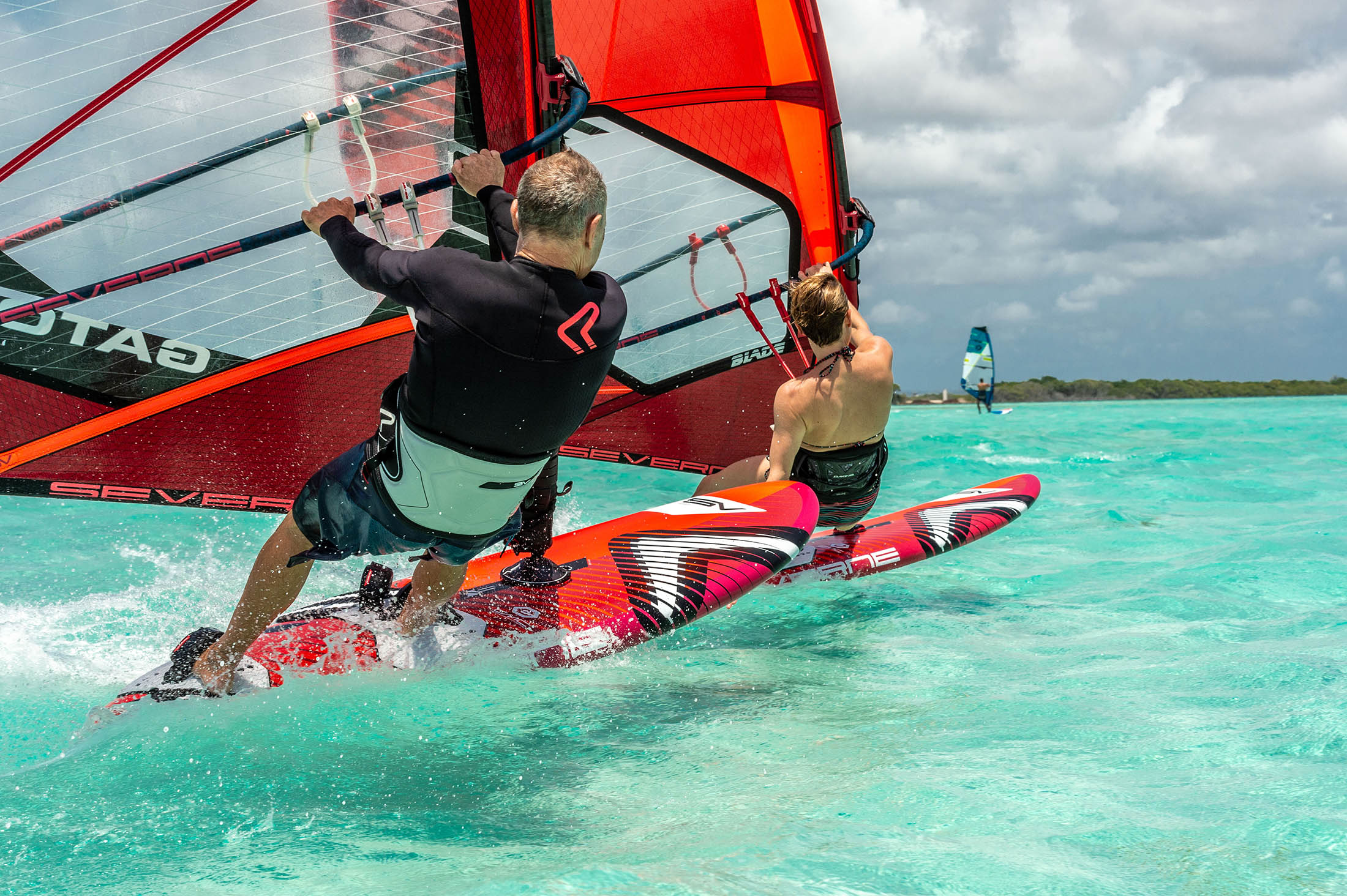
Windsurfing has been an immensely popular sea sport. It combines the wind and the sea at the pristine beaches worldwide. It is simple to practice windsurfing. You would be required to control the wind while balancing your board on the sea.
Finding the right windsurfing board can greatly enhance your windsurfing experience. Here are some tips to help you choose the right board for your skill level, conditions, and preferences:
Skill Level
Consider your windsurfing skill level. Are you a beginner, intermediate, or advanced windsurfer? This will influence the type of board you should go for.
Board Types
There are several types of windsurfing boards, including freeride, freestyle, slalom, wave, and foil boards. Each type is designed for specific conditions and riding styles. Choose a board that aligns with your intended use.
Volume
Board volume is crucial for stability and buoyancy. Beginners often benefit from higher volume boards as they provide more stability, while advanced riders might prefer lower volume boards for increased maneuverability. Your weight and skill level will help determine the appropriate volume.
Board Length and Width
Longer boards offer more stability, while shorter boards are more maneuverable. Wider boards provide more stability and are better suited for light winds, while narrower boards are better for high winds and more advanced riders.
Sail Compatibility
Ensure the board you choose is compatible with the sail sizes you intend to use. Different board types have recommended sail size ranges, and using the right sail size for your board is essential for optimal performance.
Fins
The fin setup affects stability, maneuverability, and upwind performance. Larger fins provide more stability and upwind power, while smaller fins enhance maneuverability. Some boards offer adjustable fin systems, allowing you to fine-tune the performance.
Brand and Model
Research reputed windsurfing board brands and models known for their quality and performance. Reading reviews, seeking recommendations from experienced windsurfers, and visiting local windsurfing shops can provide valuable insights.
Try Before You Buy
If possible, rent or borrow different types of boards to try them out before making a purchase. This hands-on experience will help you get a feel for different board types and sizes.
Budget
Windsurfing equipment can vary widely in price. Determine your budget and aim to get the best quality board within that range. Remember that a well-built board can last for many seasons if properly cared for.
To sum up
Remember that finding the right windsurfing board might involve some trial and error, as personal preferences play a significant role. It’s essential to find a board that feels comfortable and allows you to progress while having fun on the water.



